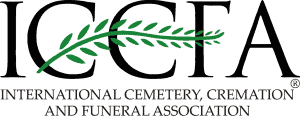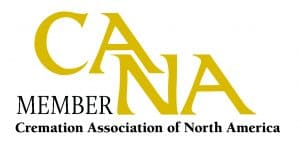We all are familiar with the term ‘poverty’ and what it implies. The US Census 2017 reported that 13.9% of Americans live below the poverty line or poverty threshold. The poverty threshold is defined as a household income of $16,240 for a family of 2. This, however, does not take into account the thousands of households on low-income but earning over the poverty threshold (which increases to $24,600 for a family of 4).
The threshold for low-income is set at roughly $45,000 for a family of 4 and according to the Census Bureau, 18.5 million Americans are in “deep poverty”. This means just below 50% of Americans fell into the bracket of low-income or poverty. Quite staggering isn’t it? So almost half of the nation could be classified as in dire financial circumstances. According to a MarketWatch report in January 2020 almost 75% of Americans were living pay-check to pay-check.
With the considerable population we have on low-income, and families that are struggling to make ends meet month to month, it comes as no surprise that we are entering an era of what is being termed “funeral poverty”. That is there are more and more families simply unable to meet funeral costs when a family member dies.
How does funeral poverty affect families?
A traditional funeral costs $7,360 (NFDA), an amount which does not take into account cemetery costs, meaning the full cost of a burial is more likely to reach nearer to $10,000 in many cases. How can a family on low-income find $10,000 in a short space of time to cover funeral costs? What about life insurance or a burial fund you may ask? Well, there was a time when people did carefully put aside a few dollars per month into an appropriate policy or fund, but unfortunately this acknowledgement and provision for immortality, no longer features so strongly in our culture.
A funeral director is (very politely) quoted as saying
“When I started 40 years ago people were more aware of their own mortality. People had their own policies, people had insurance or they put money aside. They understood that they were going to die. I don’t know if we are wrapped up in immortality, but people don’t think about it now.”
This statement certainly reflects the cultural shift and our death taboo. Over the last few decades the subject of death has become little discussed. Perhaps this can be attributed to the ‘glory’ years following the World Wars and the Great Depression, an era when death has not tainted so many families and the average life expectancy has increased?
There are movements today seeking to encourage us to talk openly about our mortality and death. Death Cafes have sprung up around the globe, along with websites inviting us to have “the conversation”. Yet death and planning for our end of life, is still something that most of us prefer NOT to do. Culturally it remains somewhat ‘distasteful’. I suspect it is even more difficult to openly discuss end of life when there are concerns about finances.
How has this funeral poverty crisis crept up on us?
Funeral poverty is an unexpectedly potent indicator of the combined impact of recession, austerity, low wages and an insecure job market. This situation has been creeping upon us slowly as more families have fallen upon hardship, or are struggling just to put food on the table. Many families have already maxed out all possible credit opportunities, and the reality is that lending for a funeral (or funeral finance) is not so easy to get. The lack of open discussion about death and end of life planning, the poor economy and the breakdown of nuclear families and communities are all contributing factors in why we now face a funeral poverty crisis. As families have become extended, and transient, the responsibility for who should pay for a family member’s funeral can come under contention.
I also believe that there has been a denial of this rising problem. As death is not given much mainstream attention, the rising issues have fallen under the radar. The funeral industry (a $6 billion industry) has not been keen to acknowledge change, a shift away from traditional funerals and a demand for lower cost and simpler funeral alternatives.
How is this funeral poverty crisis affecting the funeral industry?
The funeral poverty issue in the United States needs to be acknowledged by the funeral industry, and the industry (as a whole) needs to re-align itself. Many families simply cannot afford a $7,000 outlay for a funeral these days and they are demanding lower cost options. As a result, we have witnessed a huge shift to cremation, as a much lower cost disposition alternative. A simple cremation can be performed for under $1,000 in many areas of the U.S.
The funeral industry are already beginning to see declining profits as the cost of the average funeral case decreases, and more families choose cremation. But this is but the tip of the iceberg! The funeral industry as a whole maintains a position where they are now accepting that cremation is here to stay, but see their role as one to ‘educate’ the funeral consumer in how to befittingly create a cremation memorial. There is a belief that incremental sales (up-selling as it is known in the industry) can still help them to add revenue to a basic cremation case.
The reality that we see, and hear about, is that more families are seeking out an alternative that does not involve funeral home services. Natural, or green, burials have experienced something of a revival as families explore the alternative of a simple burial without a casket, burial vault or embalming. There is an increased interest DIY Funerals, where the family makes all the cremation or burial arrangements themselves, file the paperwork and transport the deceased to the crematory or cemetery in their own vehicle. However, the most common way that families are dealing with funeral poverty is to opt for the most basic cremation option–a direct cremation. A direct cremation can be conducted in many cities for less than $800.
This is a huge reduction in case value to a funeral home, when a family opts for a low cost direct cremation and no additional services. There are some funeral businesses that recognized what was happening and altered their business plan to meet this demand. You will find a low cost cremation provider in most cities, and these are the guys that (quietly) understand what is happening in their industry. These are going to be the businesses that ride out the funeral poverty storm!
Funeral homes have always tried to work with their client families regarding paying for a funeral. In the good old days a funeral could go ahead before the family had paid in full, but this rarely happens these days. Today more funeral homes find themselves in the position of having to negotiate payment terms with a family who has requested the funeral home’s services before realizing the implications of the cost. Bad debt has always been an issue for funeral businesses, and some funeral homes have been willing to take on charitable cases for the goodwill and community recognition it gains. But this growing funeral poverty issue is causing funeral businesses to re-work their policies on bad debt and funeral contracts. Even state and county authorities are re-writing policy on indigent burials, as more families seek out public assistance to meet the cost of a funeral. Some states have axed financial assistance, whilst others have reduced it significantly, dealing with all their indigent deaths by direct cremation.
An indigent burial program used to cater to those poor individuals who had no family, or had been instate care. Today authorities are finding that even those with family can be left for the state to dispose of when family walk away without the means to attend to a funeral and the costs associated.
How can we tackle the problem of funeral poverty?
Funeral poverty is already an issue, but it is going to become a crisis if we do not try and avert it. How can we tackle it? We need to ensure affordable options ARE available, and that those families that need them KNOW they are available. There has been some coverage in the media of late of this pending crisis in death care in the U.S. and exposure of the ‘high costs of dying’, but we need to address this in a much bigger way to get the message across to millions of struggling Americans.
People need to know there are cheaper ways of arranging a funeral. They need re-assurances that it is not undignified or disrespectful to arrange something simple and inexpensive. Families need to be empowered to understand that they CAN reclaim the death care ritual, arranging services themselves, without needing the cost of paying a funeral director.
Should there be a better provision to help those that cannot afford to pay for a funeral? Financial assistance is so patchy and inconsistent across the nation. Would it not help to have a national funeral assistance program that provided a fixed amount that would cover a direct cremation? The UK has a fixed funeral payment of £700 ($1,126) and a cremation rate of over 75%, although a low cost direct cremation in the UK costs £995 ($1,600), so this still leaves many families needing to contribute to the cost to arrange a very basic disposition. In the U.S. many counties contract with a local funeral home to conduct their indigent dispositions at a cost of around $350 per cremation. This means a provision can be put in place for a relatively low cost.
Considering that we have so much green space in the U.S., there should be scope to extend provision for simple, natural burial at a very low cost. If each state could operate a not-for-profit green cemetery and offer those families struggling financially the option of a free (or minimal cost) burial, this may help avert the funeral poverty crisis. This would require families to change their attitude to death care, and take a more active role in the death care process, rather than handing it off to a funeral home.
It is fair to say attitudes are changing, and we are less sentimental about death, but the financial implications of the masses of Americans without the real means to cover funeral costs and a rising death rate means that we are a long yet from a coherent plan to address funeral poverty in the U.S.
Sources:
MarketWatch A Shocking Number of Americans are living paycheck to paycheck
National Funeral Directors Association (NFDA)
The Guardian: The return of the pauper’s funeral to austerity Britain

